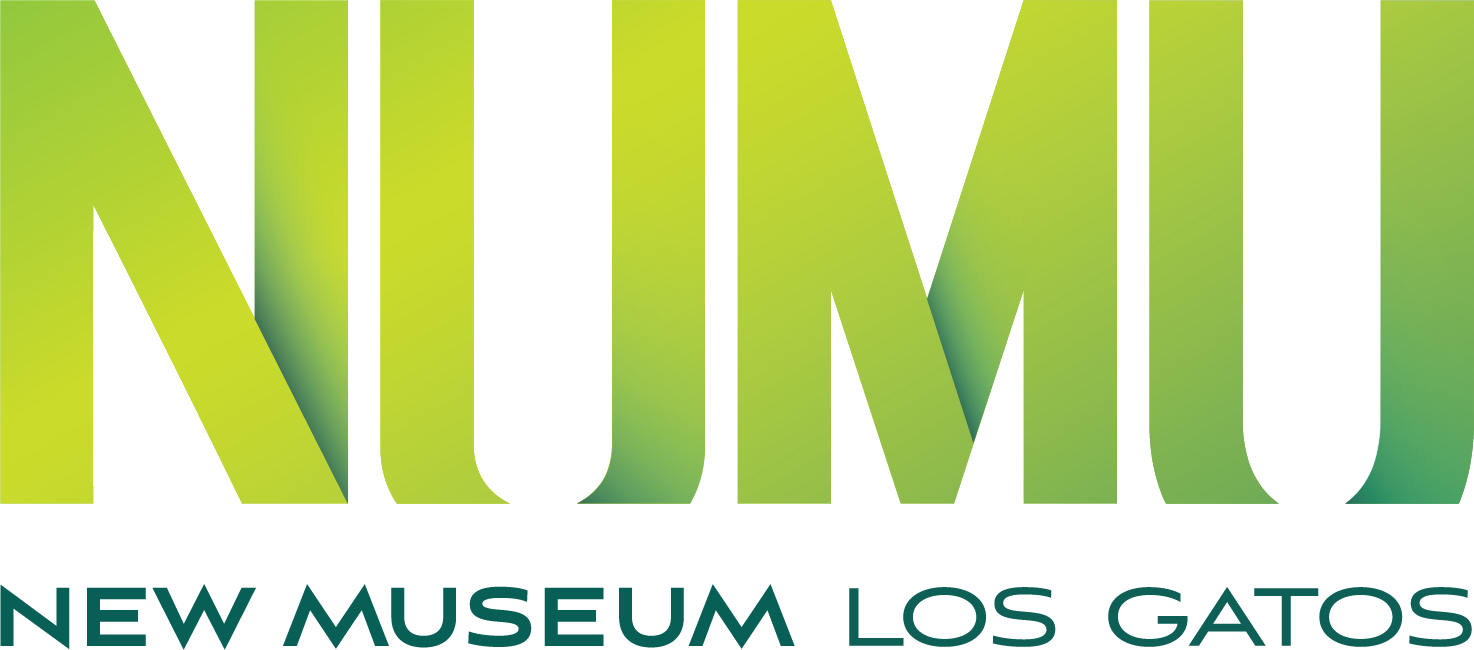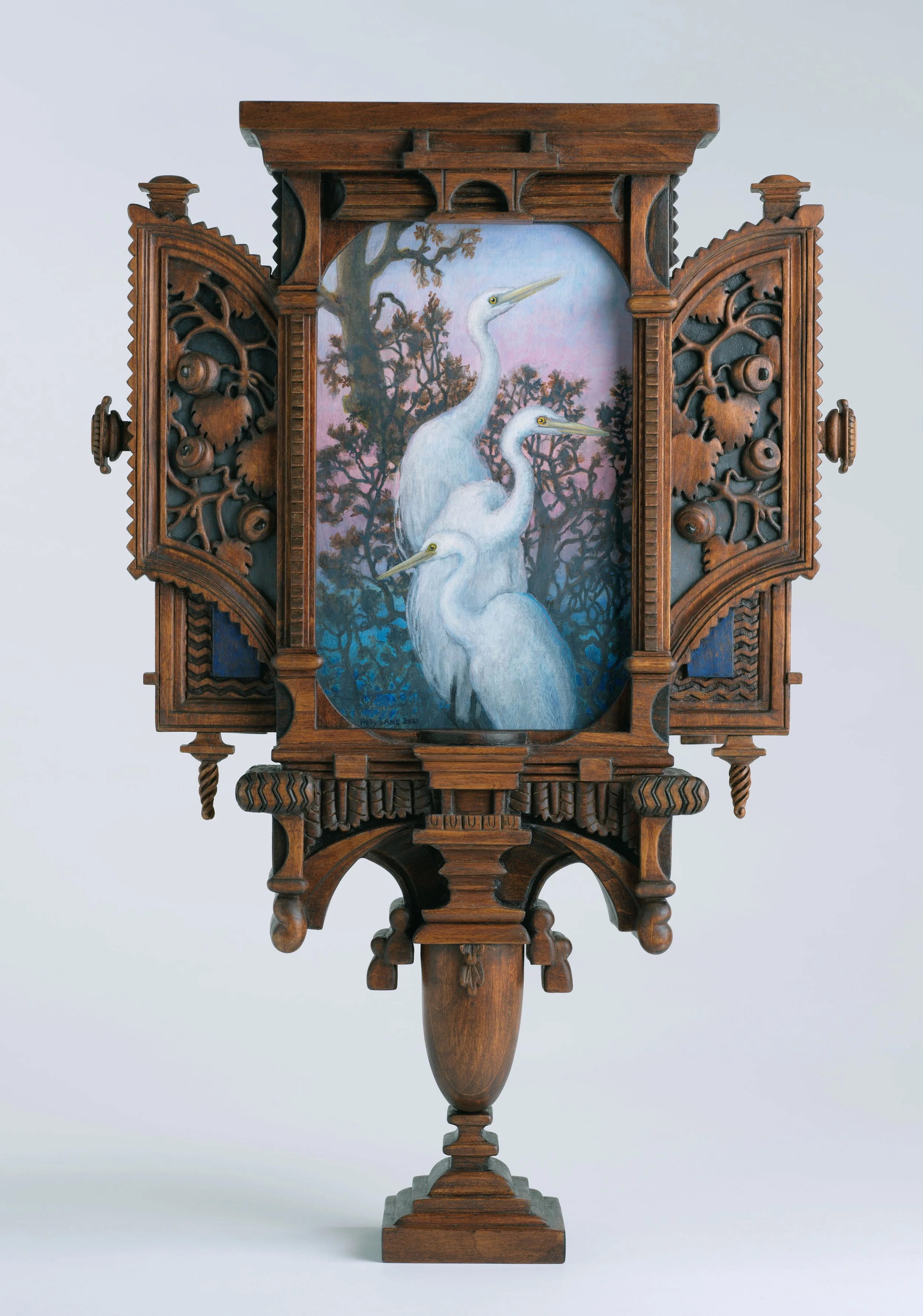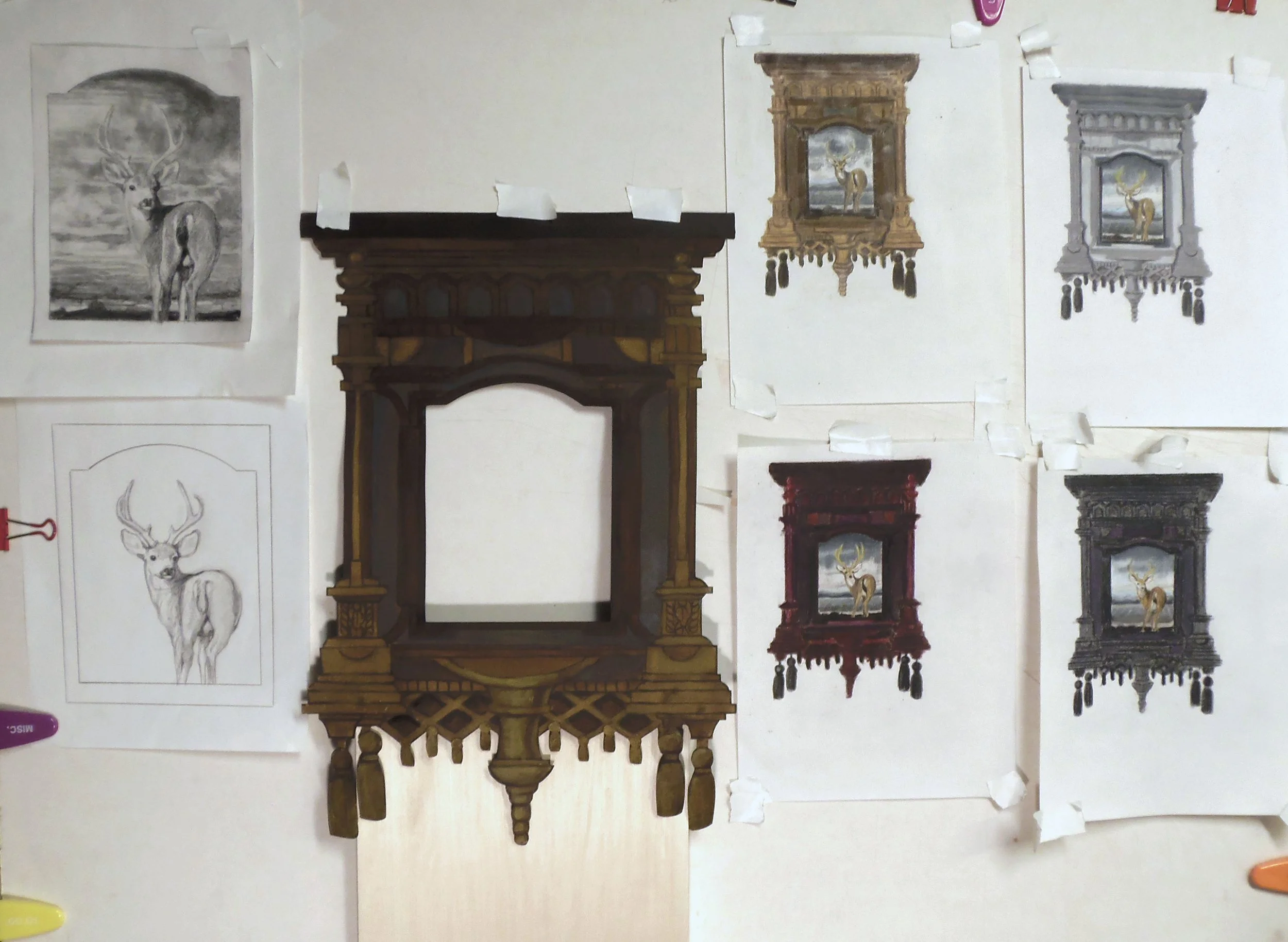Artist Holly Lane has reimagined a new art form of her own invention, in which each component—painting and frame—is fundamental to the work as a whole. Holly has exhibited in two solo shows at NUMU, Not Enough Time to Love the World and Holly Lane–In the Artist’s Studio. Read on to hear her answer questions about her artistic practice, goals, and more!
Holly Lane creating Gentle Muse (2010), 22 x 31.5 x 6.5 inches, Acrylic and carved wood
Holly Lane, Companions, The Three Graces (2021), Acrylic and carved wood, Courtesy of Winfield Gallery.
"At sunset in Calero County Park in San Jose, Great Egrets land in a large tree near the picnic area. These usually solitary, ethereal-looking birds arrive one after another and settle in for the night. My delighted mind quickly starts making visual associations: seraphim, otherworldly apparitions, the Three Graces. However, after an art historical-iconographical rush, I switch to a different mode, I attempt to see the birds as individual beings as nature made them for themselves, with lives, intentions, and relationships, not as symbols, or as existing for mankind’s use."
Holly Lane, After the Storm (2012), Acrylic and carved wood, Courtesy of the artist.
Holly Lane, Growing Still (2017), Acrylic and carved wood, Courtesy of Joe Naujokas.
Holly Lane's Overlook frame studies, June 2022.
When and how did you first get started in art?
When I was a child, I would draw all the time, even under my bed in our shared bedroom, when everyone was gone. I remember my mother asking if I didn’t want to go out and play, and I said I was happy drawing. After two years of studying philosophy in college, I switched my major to Studio Art because I wanted to physically work with ideas and to be in dialog with physical materials, which have their own voice and beingness.
You work with two different mediums, paint and wood. What do you especially like working with each of them?
Wood is solid and somewhat shapeable. It holds its shape, if you build or carve it properly, and you can add or subtract. It is a raw, natural material so you must learn to read the wood and adapt your plans to deal with the radial and tangential tensions in the wood that form from the tree’s growth geometry. It is a slow process. When I shift to painting I’m always struck by the speed and nimbleness of paint. Both are pleasurable in their own way.
What led you to choose the world of animals and wild nature for your subjects?
Nature is my home and animals my “fellow mortals” as John Muir described, so in this body of work, I am doing portraits of friends and home paintings. Plus, since I started out studying philosophy, I have included Transcendentalist ideas and other philosophical musing in the work. In this body of work, wild nature and animals are fore-fronted, but I also do figurative work that shows women in nature and how women artists see women. Also, some figurative pieces postulate the possible backstory of myths, or their ramifications today.
What did you do to prepare for your NUMU exhibition?
About two years ago I was approached by Winfield Gallery with the opportunity to work with guest curator Helaine Glick to submit a museum exhibition proposal. Helaine and I worked together on the proposal; writing, providing photography of the work and the creative process, discussing, and refining. This process took a while and then we submitted the proposal to NUMU. After a presentation at Winfield Gallery to NUMU’s Director of Exhibitions and Collections and other NUMU staff, we waited a bit more, but Helaine and Winfield Gallery were optimistic. It was exciting when NUMU said yes! While the museum reviewed the proposal I worked on new work. I made six new pieces over a two-year period. It takes me a long time to make each piece. Meanwhile, after considering the space measurements, we continued to work on which pieces would be selected for the show. We requested a few loans from collectors in California. Plus, Helaine came to my studio in Merced to see the work. I read Helaine’s texts and we worked together to make everything accurate and clear. When a shipping date was scheduled I worked for a week doing condition checks, tiny fixes if needed, cleaning the work ,and then packing it. After the shipper came, I started letting people know about the show on social media and my list of people who asked to be kept apprised of upcoming exhibitions. Winfield Gallery, Helaine, NUMU, and I have been working on a tri-fold color brochure for the show with essays. NUMU has created such a beautiful installation. I am very happy with it.
Is there anything you would like to try artistically, or any specific subject you would like to investigate that you haven’t yet done?
I would like to travel to Europe and study ecclesiastical architecture and carvings, then create a very large piece. In 2003, I completed a five-by-twelve-foot piece that is in the Seven Bridges Foundation Collection in Connecticut, but I’d like to make an even larger piece. It would require resources, a lot of wood, and a bigger studio.
As someone who has been exhibiting for more than thirty years, what advice would you give to young, emerging artists?
Keep making work and exhibiting. You never know who will see your work and respond. Do work that excites and fascinates you. For emerging artists who are trying different things, when you find a style, material, or subject matter that feels fertile to you, make a body of work (six works or more) that is a balance of artistic exploration and consistency of vision. The depth of exploration and growth will take you to new heights. As wonderful as the internet is, people want to see the work in person. A website is a supplement to in-person exhibitions.
You focus a great deal of attention on your frames. How did you get interested in frames, and what do they add to your art practice?
When I was an undergraduate and completed a painting course the professor said, “Good, now think about a frame.” I thought to myself, “What? I thought I was done!” Since I had been a philosophy major I asked myself what is the nature of frames? What is a frame’s purpose? How are frames conceived now and in the past? I was also thinking about the philosopher Jacques Derrida’s framework concept, where our conceptual frames precondition our perception of what is in the center. For example, a conceptual framework for the National Parks was “the National Park is America’s playground.” The framing conception of playground preconditioned people to see National Parks as a party house, as a place in nature to bring their toys and leave trash. If the National Park conceptual framing was “the National Park is a sacred space,” that would place our perception of and behavior in the National Parks in a different light. With all this circling in my head I went to the University library and found illuminated manuscripts which had text with fanciful borders including scrolling, leaves, and little beasts sometimes pointing to the text, mocking or spoofing and generally being naughty. That was my moment of epiphany. A frame could comment on the text, or the painting within. I saw that the frame could be many things; it could be a commentary, an informing context, an environment, a fanfare, a shelter, it could extend movement, it could elaborate on the painting conceptually or formally, it could embody ancillary ideas, it could be like a body that houses and expresses the mind, and many other rich permutations. From that point on, I began to create pieces that fuse frame and painting, with some pieces having doors that open and close to suggest contingency, potentiality, future, past, or cause and effect.
The frame adds a literal physical dimension to my work as well as a conceptual one, for I think to experience the space of a painting we project our minds into the painting. Consequently, I view pictorial space as primarily experienced by the mind. The spatial qualities of sculpture exist in our own physical space, we walk around it and proportion our bodies to it – in part, sculpture is apprehended by our bodies, “seen” by our bodies. By fusing sculptural frames with pictorial space I hope to address both these modes of aesthetic perception, mind and body.
What would you like people to notice in your work?
Besides the symbology and references, I’d like people to see the orchestration of shapes, and other formal qualities like volume, verticality/horizontality, depth, shape rhyming, and shape rhythm and how they interact with each other and with the painting.
About Holly Lane
Holly Lane now resides in Merced, CA, after many years as a resident of San Jose. She has been the subject of numerous solo exhibitions throughout California, New York City, and across the United States, and since the early 1980s has participated regularly in group exhibitions throughout the country. She holds a B.F.A. with Great Distinction in Painting, and a Master of Fine Arts degree in Pictorial Arts from San Jose State University, San Jose, CA, and is the recipient of a 2012-13 Pollock-Krasner Artist Grant. Her work has been reproduced in over fifty publications, including The New York Times, The New Yorker, and the art history textbook Artist and Audience, by Terence Grieder. Her work is held in more than ninety private and public collections.






